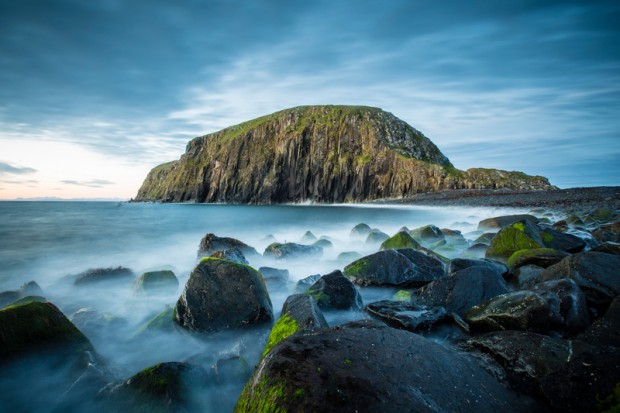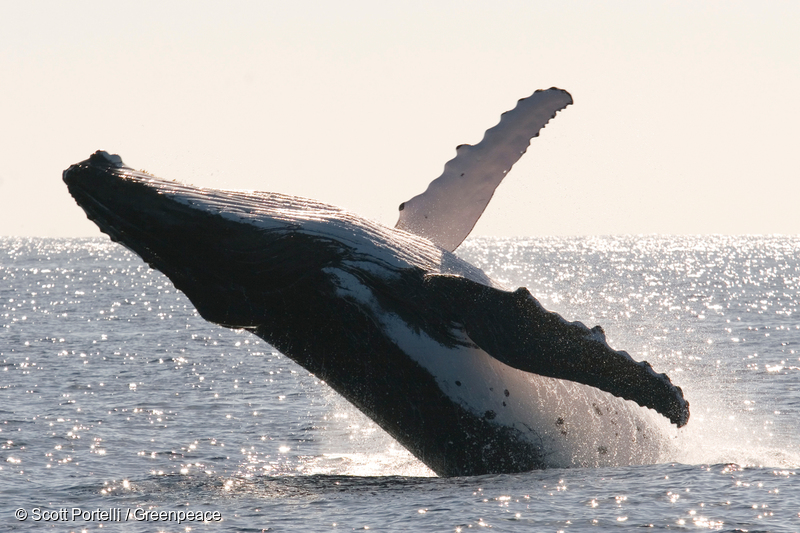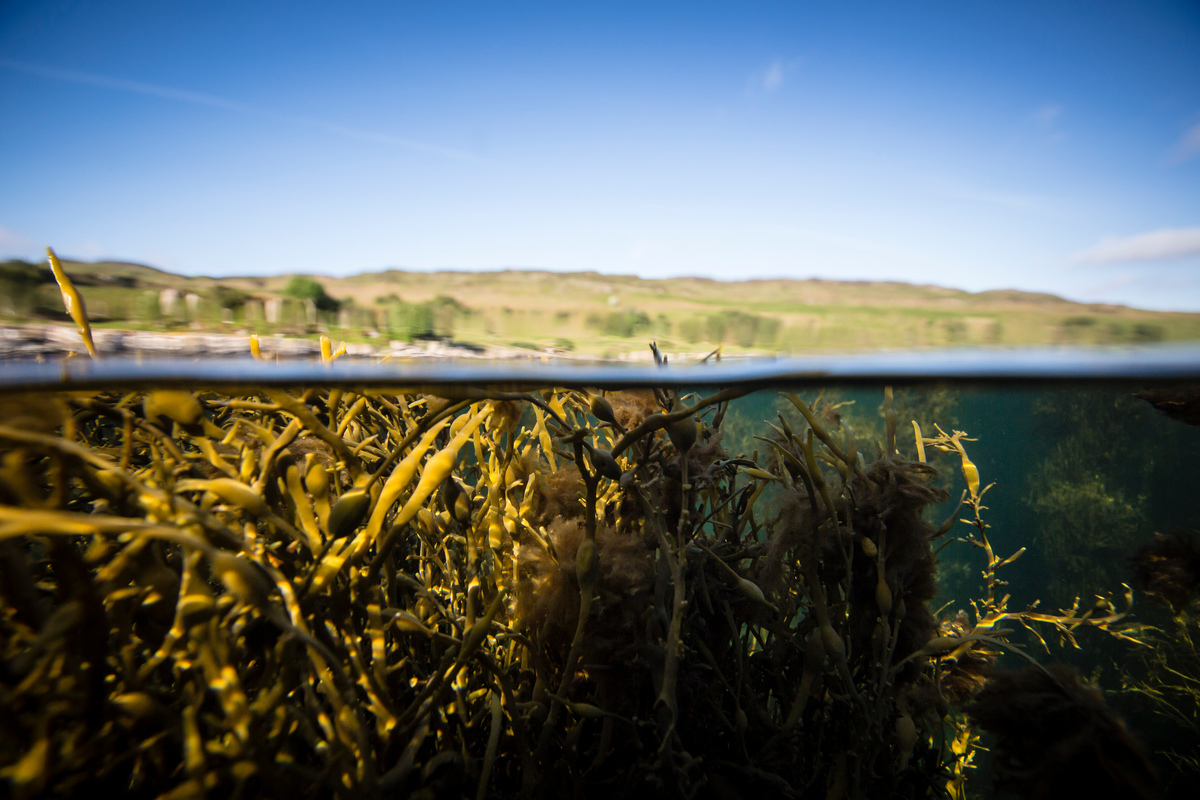How much do you know about whales?
I’m Willie and I’m an oceans campaigner here at Greenpeace.
Over the years I’ve had the privilege of seeing lots of whales, both from the deck of Greenpeace ships, and also on whale-watching trips. I’ve been lucky enough to see massive humpbacks leaping clean out of the water in Cape Cod, migrating gray whales in California, orcas chasing salmon in Canada, and even minke and fin whales in glassy-calm British seas.
I’ve also learned a lot of interesting and surprising things about these ocean giants, and I wanted to share a few of my favourite facts with you:
11. Sperm whales have the biggest brain of any animal – ever
Not only is it the biggest animal with teeth, it’s also got the smarts. The world’s largest true predator has a brain over 5 times as heavy as ours.

10. The biggest animal that ever lived is a female blue whale
It’s almost impossible to imagine how big a blue whale is, but they are bigger than any dinosaur ever discovered, and can be as long as three double decker buses. Female blue whales are bigger than males, so the biggest animal that ever lived was a ‘she’.

9. Humpback tails are as unique as human fingerprints
Scientists can identify humpback whales by the markings on the underside of their tails. Each is a unique pattern, and it’s especially handy that the whales like to show off those splendid flukes when they dive for food making perfect photo opportunities for scientists and whale-watchers alike!

8. Sperm whales sleep standing up
It’s a bit hard to fathom, and doesn’t sound especially comfortable, but sperm whales sleep vertically, dangling tail downwards. In fact whales ‘sleep’ by switching only half of their brain off at a time (don’t try this at home) and this position makes it easiest for a dozing whale to breath out of its blowhole.

7. Bowhead whales are nature’s icebreakers
Bowheads have big, big heads, and thick, thick blubber. These Arctic specialists are so robust that they can sometimes crack open sea ice from below, so they can pop up to take a breather.

6. Sperm whales have undersea battles with giant squids
It’s never been witnessed, but we know that massive sperm whales have life-and-death deep-sea battles with giant squid. Sperm whales love to eat squid, and giant squid prefer not to be eaten, which is why many sperm whales bear battle scars in the tell-tale pattern of giant squid suckers over their faces.

5. Whales make the longest migration of any mammal
Some whale species rack up a lot of sea-miles. Many migrate between warm waters to breed, and cold waters to feed. The most impressive migrations are by humpback and gray whales which travel every year for thousands of miles between the tropics and polar seas (and back again).
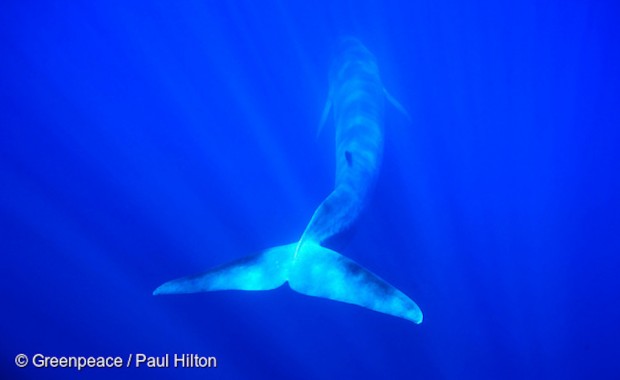
4. Narwhal tusks are super-sensitive sensory organs
Narwhals’ seemingly-ridiculous tusks look like they are for sparring with other narwhals. But recently scientists have discovered that the eight feet long tusks are an extra sensory organ, which can ‘taste’ the chemicals in the water, a bit like a snake’s tongue tastes the air.
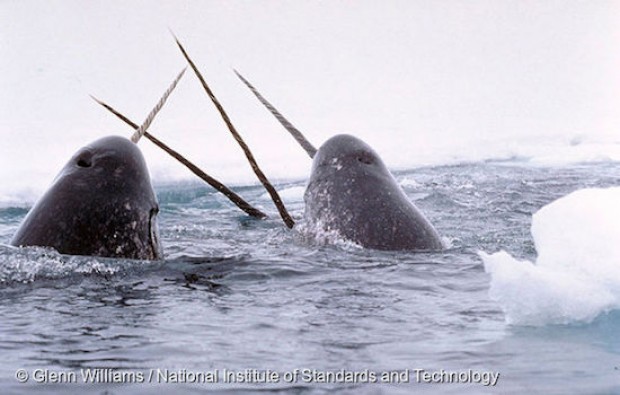
3. The blue whale is one of the loudest animals on earth
At 188 decibels blue whales can produce one of the loudest sound of any animal on earth. It’s louder than a jet engine, and underwater the sound can be heard hundreds of kilometres away, sometimes across whole entire basins.
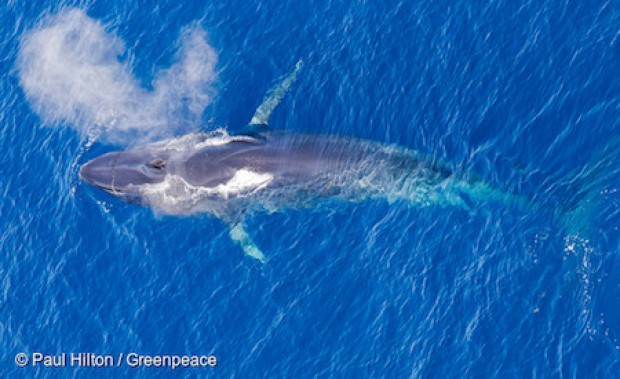
2. Humpback whales follow & create musical trends
Humpback whales love to sing. But they don’t just trot out the same old tune. Over time the songs change, and evolve, and if they like a bit of something they hear another whale singing – rather than just have that earworm stuck in their head – they will incorporate it into their own repertoire. Then, if it’s catchy enough it will spread to neighbouring whales and then populations farther and farther across the sea – a bit like a karaoke Mexican wave!

1. Whales fertilise the ocean
Not only is whale poo a great ocean fertiliser, but by moving between the surface and the depths to feed, whales help mix-up the ocean and move nutrients around, making the oceans healthier and more productive: it’s actually called ‘the Whale pump’ (make your own jokes) and scientists think that the massive amounts of whales killed historically by commercial whaling have had a hugely negative effect on other ocean life.
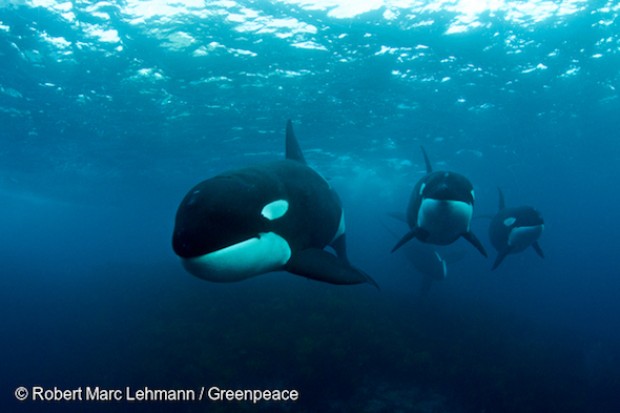
Whales really are amazing. Despite these amazing facts the reality is there is so much about whales we simply don’t know yet.
What we do know is that human activity hurts whales and pollutes their ocean home, and those problems have gotten worse in the past few decades. After devastation by commercial whaling the world’s remaining whale populations face a range of threats: from climate change to destructive fishing, and pollution from plastics, toxic chemicals, and ocean noise.
Greenpeace is working hard across the globe to save precious places like the Arctic and the Great Barrier reef, and to tackle the global threats like climate change, destructive fishing and plastic pollution. We can only defend our oceans and our whales with your help.
Your generous monthly donations are what funds our work – and thanks to you, we’re going to make sure that whales can keep on doing what they do best – being awesome! (If you’re not currently a donor, but would like to be, simply click here to join now)
But of course the animal kingdom is filled with *loads* of other fascinating creatures too. Follow the links below for some equally extraordinary facts about…
Enjoy!

